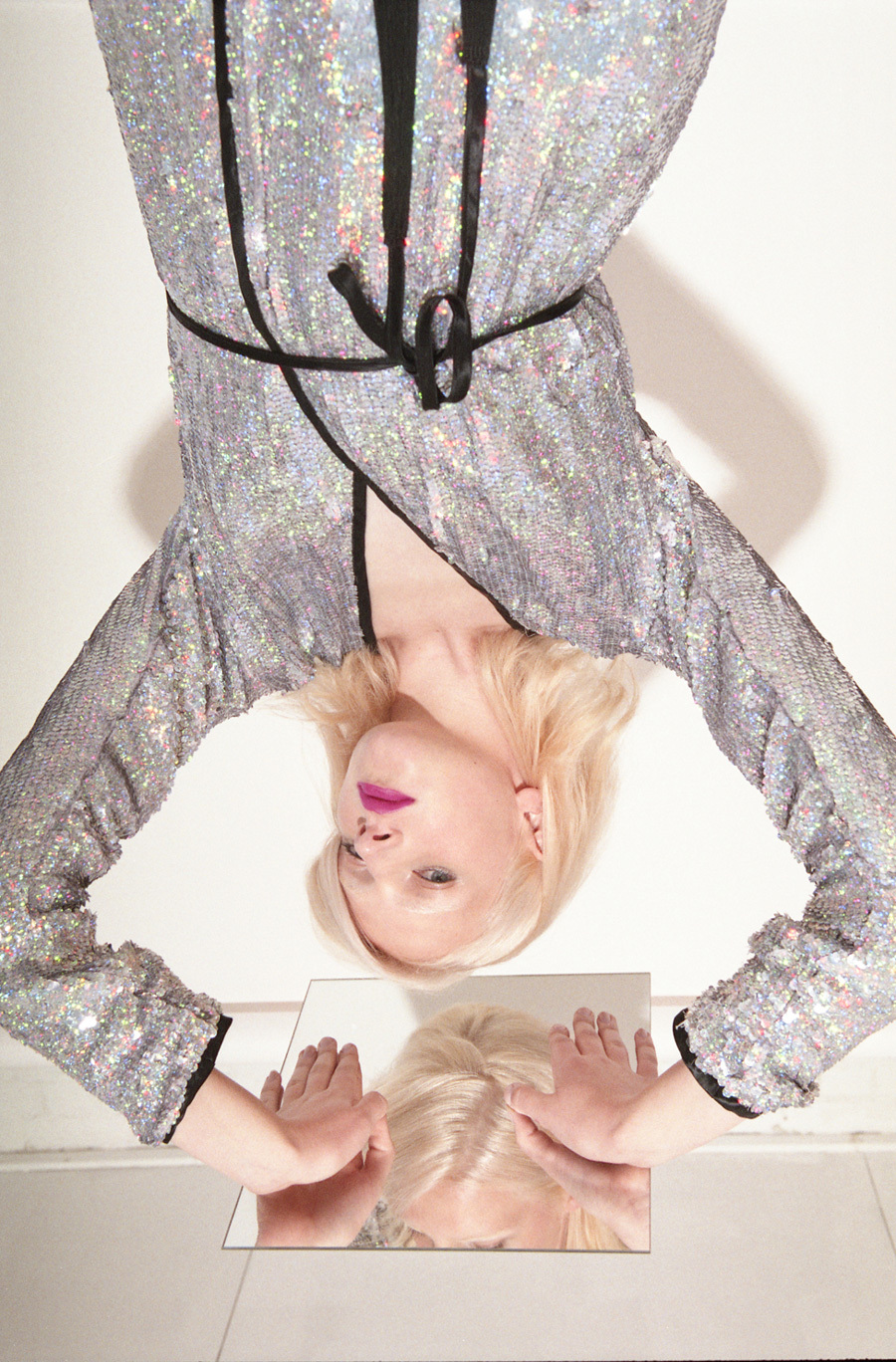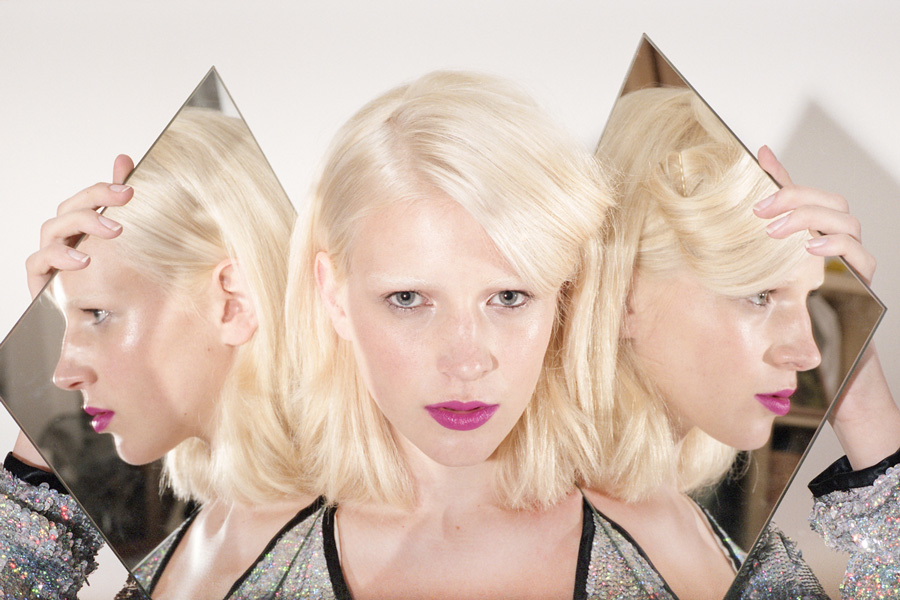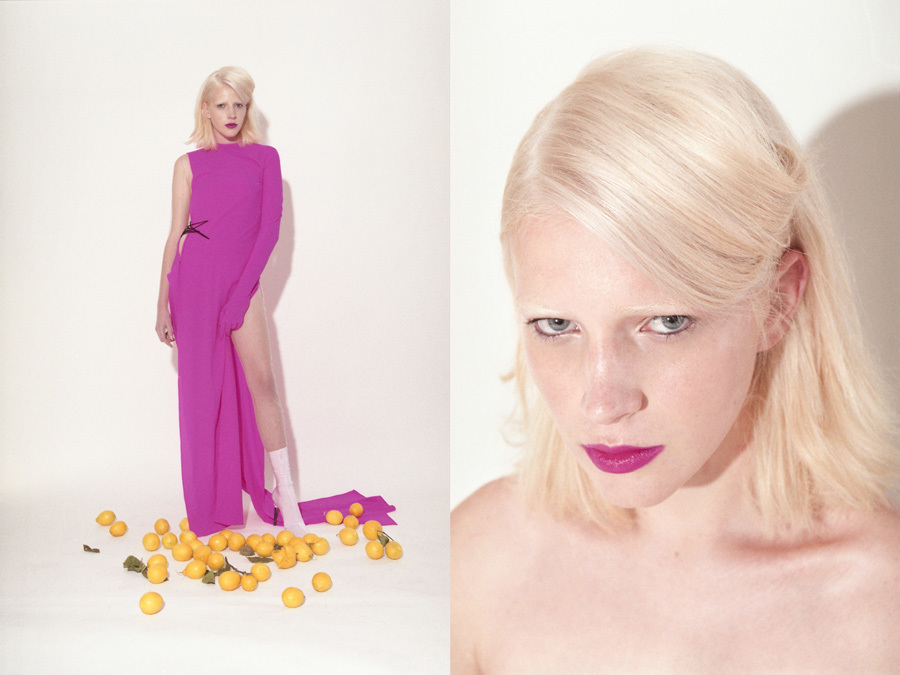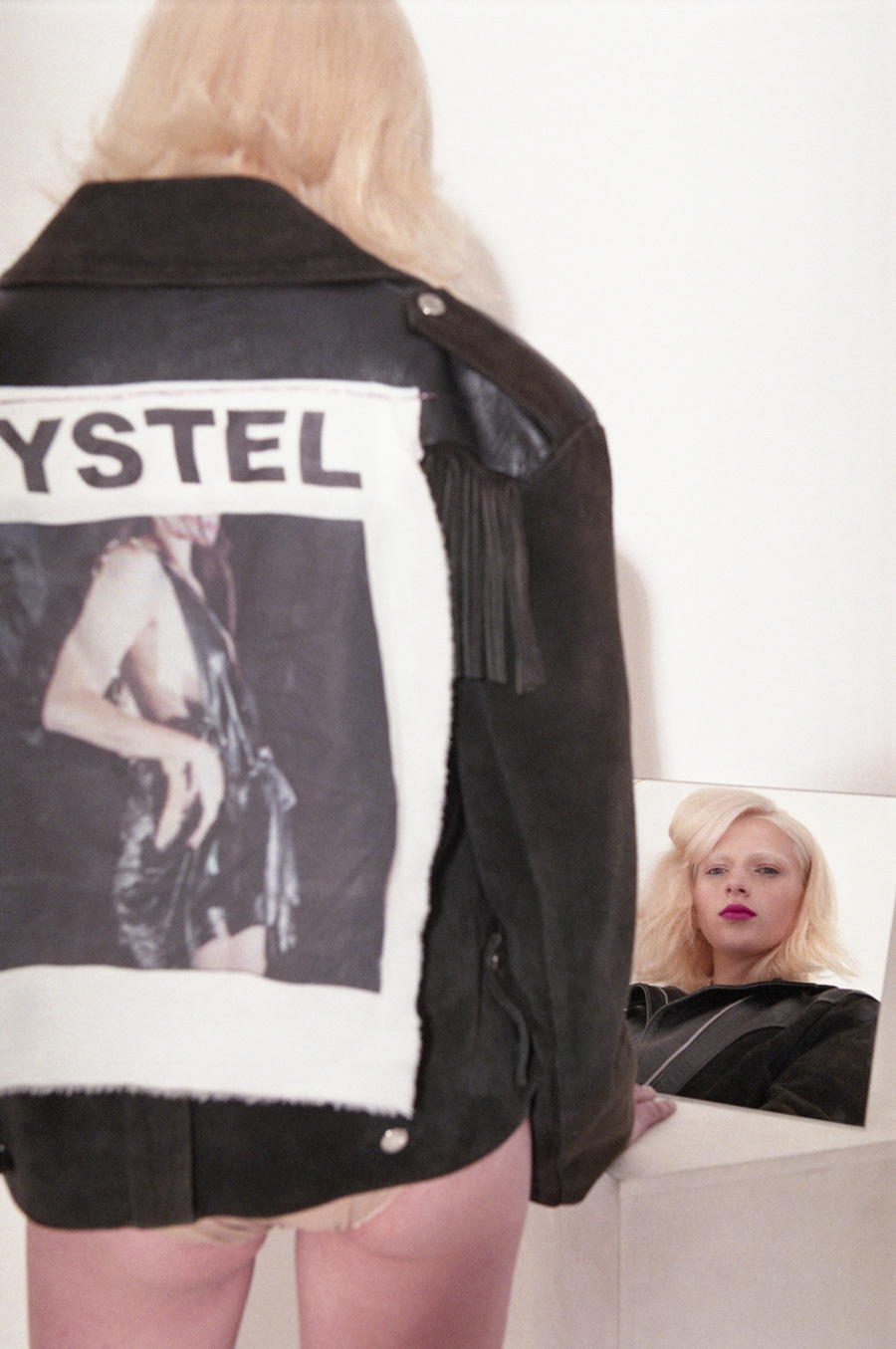When Gemma Cowling transitioned earlier this year, she found support and community within the world of fashion. The 19-year-old faced discrimination and confusion in many areas of her live, but modelling emerged as a haven of support and understanding. Despite ongoing conversations around the industry’s role in promoting unattainable beauty ideas, Gemma’s experience does show how a world built on creativity, freedom and expression can offer refuge. We spoke to Gemma about transitioning in fashion, and navigating the support and possible tokenism that comes with it.
This year you transitioned and really began to make an impact as a model. Would you mind if we began by speaking about that a little?
I think that, had the language around trans people, and the representation of trans people, been more apparent when I was growing up it would have occurred to me sooner. But it was so far out from what I was exposed to, it took years until I was able to answer all these questions for myself. From the the time I was four I was often labelled as simply a gay man, I think, the fact my effeminate traits were labelled as gay perhaps played a part in me taking my time.

So it wasn’t just about figuring out who you are, but also establishing who you’re not.
Yeah, it’s actually quite funny. Because my effeminate traits labelled me as different I learned to covered them up, but then had to relearn them when I transitioned. Trans people are so beautiful because we are so meticulous. I sat and watched how women walked, their mannerisms and mimicked that. All the effeminate traits I tried to hide I relearned and now are fully part of me, there’s no hiding them anymore.
How have the people around you responded?
I’m not from an extremely conservative family, but they are definitely quite conservative. Most Australian families still only understand the nuclear male/female relationship and role based representation. My family have a very solid idea of gender and those binaries, so I think they struggled with understanding what everything meant and where it left me in the world. But now they are cool with it. I think once I started living day-to day-as I am, the fear went away.
I’ve heard you describe transitioning as fun, can you tell us a bit more about that?
(Laughing) It’s weird but every tiny little thing is the coolest thing ever. I can remember how my sweat smell changed drastically — thanks oestrogen — and I just started telling everyone how pretty my sweat smelt. I was so excited. Plus of course makeup and hair has been fun, I’m loving my new platinum self.

That brings us to modelling. How has your role in the industry played into all of this? It’s obviously an incredibly image focused world, but also arguably a socially progressive one.
Yeah, very much so. I think creative industries make it much more accessible than institutions that abide by enforcing uniform male and female roles. I’ve actually had a lot of trouble with working, even just getting a job in a cafe, because of the legal issues around my name and insurance and because I don’t want to reveal my previous name. Coming out to my previous employer was actually one of the most difficult things and I actually got fired.
That’s horrible.
They found out through colleagues that I was planning to transition, and they didn’t mention it point blank but it was implied that that was the reason my position with them was being terminated.
Fashion is often criticised for its treatment of models, but it’s nice to hear it can be a really positive space.
I think it’s just easier for trans people to rely on creative jobs, and jobs that to an extent explore our bodies. At this point in time in society, that seems to be our value — as bodies and figures that are almost fetishised. As much as I really enjoy doing this. I think it was a pretty safe and logical step to take.
That also presents issues of tokenism though I suppose. Is that something you’re conscious of?
Absolutely. I have many talks with my manager to ensure I have longevity behind my career. There always has to be that “edge” unfortunately. Tokenism extends to everything though. I mean don’t get me wrong, it’s great to have such a large platform of awareness — but I think if the industry could move past having ‘just enough’ to accepting difference wholeheartedly.
It’s interesting the power the industry has over the representations of different bodies. Do you feel a sense of responsibility?
The way I sort of describe it is I let the system exploit me so I can exploit it right back. Yes I do need to fit these expectations of what my body is going to look like and those standards imposed in modelling, but I’m doing that so I can propel my own expectations of what female bodies should be and speak out and give a voice to others. As well as enjoy a decent career.

Credits
Text and styling Jamie-Maree Shipton
Photography Agnieszka Chabros
Hair and Make Up Ana Makridis
Model Gemma Cowling @ Azelea Models
